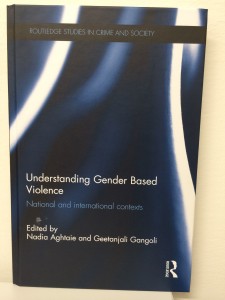Shailen Nandy, Research Fellow in the Centre for the Study of Poverty and Social Justice at the School for Policy Studies discusses poverty in the Pacif ic Islands
ic Islands
“I wish I could tell you about the South Pacific. The way it actually was. The endless ocean. The infinite specks of coral we called islands. Coconut palms nodding gracefully toward the ocean. Reefs upon which waves broke into spray, and inner lagoons, lovely beyond description. I wish I could tell you about the sweating jungle, the full moon rising behind the volcanoes” (Tales of the South Pacific by James A. Michener)
What images come to mind when you think of the islands of the Pacific? Sun-kissed beaches, turquoise seas, balmy climes? Amazing rugby players? How about poverty? No? Well, you might be surprised. Poverty, however it is measured, is a very real problem among the Pacific Islands, Countries and Territories (PICTS). It has also been frequently overlooked. Data from Oxfam New Zealand spells out in grim detail just how bad things are. Around one third of the region’s population, about 2.7 million people, lack sufficient income to meet their basic human needs. Rates of child and maternal mortality are high, and large proportions of the region’s children either never enter school or do not complete primary education. Adult literacy is low, at only 65% in the Solomon Islands. Basic service and housing provision is poor, with 15% of the population of Papua New Guinea (around 120,000 people) living in informal urban squatter settlements. These overcrowded households lack access to improved sources of water and forms of sanitation, and are subjected to the spread and effects of debilitating and deadly diseases, which drive child malnutrition and mortality. These, and other, conditions contribute to a climate with high levels of gender violence, with over half of women in Samoa and the Solomon Islands reporting experiencing physical and/or sexual violence. Paradise for many maybe, but certainly not for all.
The United Nations identifies 57 countries as Small Island Developing States (SIDS). Located around the world, they share similar development challenges, including having small populations, limited resources, vulnerability to natural disasters and climate change, and being geographically remote.
The lack of attention and research on poverty in SIDS, like the PICTS, has impeded some governments from developing the strong and effective anti-poverty policies that are needed. Conventional monetary poverty assessments cannot give a true picture of the extent of the problem, especially in countries where people may use bartering or reciprocal exchange instead of cash purchasing, and where families live together in extended households, pooling and sharing material and social resources. In addition, in some PICTS, many households receive remittances in cash and as durable goods from relatives living and working abroad and these can be very difficult to measure accurately. In such instances, assessing poverty needs a more sophisticated approach, with less reliance placed on traditional measures like an individual’s or household’s income.
Bristol’s Townsend Centre for International Poverty Research has an international reputation for poverty research, analysis and anti-poverty policy development. Members of the Centre have advised governments, the United Nations and many international organisations around the world on how best to identify, assess and ameliorate poverty. Recently its work, through the ERSC-funded Poverty and Social Exclusion in the United Kingdom project, informed the public, national media, and policy makers about the true extent of poverty in the UK at the height of the recession. What made the project so important were its use of methods and techniques which are recognised as being State of the Art for poverty research. The project used the Consensual Approach, which has been developed over 30 years. It takes into consideration the opinions of the general public about what items and activities they consider to be necessary for an acceptable standard of living, from which no one should be excluded due to a lack of resources. Importantly the approach introduces a democratic element into the definition and measurement of poverty enabling populations, rather than just academics or politicians, to determine what constitutes poverty and thus how it should be tackled. The approach is increasingly being used in a growing number of countries, including many in the European Union, South Africa, Australia, Hong Kong, Japan and even low income African countries, like Benin. Bristol researchers have been involved with most of these studies, and there are now plans to expand use of the method more widely, across the twenty-two Pacific Islands Countries and Territories (PICTS).
In November 2014, Bristol PhD student Viliami Konifelenisi Fifita demonstrated to representatives of regional statistical offices the potential of the Consensual Approach for assessing poverty in the PICTs. This trip was funded by a travel grant from the Alumni Foundation and the School for Policy Studies. He showed how, as part of his PhD looking at poverty in Tonga, the method was well suited for use in a Pacific Islands context. As Government Statistician for the Kingdom of Tonga, Viliami developed a survey module for Tonga’s national Demographic and Health Survey, which he is using to make the first scientific assessments of poverty in Tonga. His presentation so impressed delegates, that by the end of the meeting a draft module had been drawn up and was being considered for inclusion in other national surveys. At least four PICTS will run surveys containing the module in 2015, with other countries set to follow in 2016 and 2017. The data generated will change, and improve, the measurement of poverty in the region, providing researchers and policy makers with new data with which to develop better anti-poverty policies.
Viliami’s efforts to enthuse his colleagues to adopt and apply the Consensual Approach, has begun a process of collaboration between Bristol academics and PICTs statisticians and governments. One aspect of the SIDS – their small size and close-knit communities – holds considerable potential for policy development and implementation, in that policy changes can be made relatively swiftly, with benefits and improvements to people’s lives following quickly. Of particular interest in the region is the fact that the Consensual Approach captures important non-monetary aspects of poverty, which until recently have not formed part of regional poverty assessments. In March 2015 Viliami travelled to the Solomon Islands, to begin training survey enumerators in the method. Funding for this important work was provided at very short notice by an ESRC Impact Travel Award, the Centre for the Study of Poverty and Social Justice, and the School for Policy Studies. The use and application of methods and techniques developed at Bristol, and provision of training and assistance to PICTS statistical offices and governments by Bristol researchers will, in the years to come, make a meaningful impact to the lives of people living across the entire Pacific region.




 David Sweeting
David Sweeting


